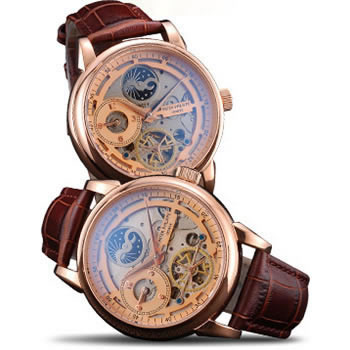
Patek Philippe Dual-Time Moonphase Tourbillon Gold
The movement is an automatic flyback chrono featuring an annual calendar and it had a 24 hour display and an indicator for the power reserve.
Reviews of the best Patek watch Copies and clones
Widely considered the most prestigious Swiss luxury
watches.

Renowned watchmaker Louis Cottier had several important clients and one of them was Patek Philippe. Cottier made his favorite complicated movement for Patek Philippe and it featured a 24-hour ring that rotated counter clockwise once daily against a bezel that was inscribed with names of cities. The local time would be shown on the display located in the center of the dial and to see any other timezone, the wearer just had to look at the hour numeral located right next to the name of a city which represented a particular timezone. In the year 1937 the company introduced its very first world timer wristwatch that had a stationary bezel. The watch, Reference 515 HU shows GMT at 12 o’clock. In the same year, they unveiled a better version the Reference 542 HU which had a rotating bezel.
Traditionally speaking, Patek Philippe makes 3 kinds of chronograph watches as follows: split seconds chronographs, simple chronographs and simple chronos that come with perpetual calendars. So when the Reference 5720 arrived which was essentially a simple chrono with perpetual calendar, it was not received with shock but rather, with delight from the fans of Patek Philippe watches. Demand for it was very high and people had to wait a long time to get their hands on this watch.
In 2012, Patek Philippe completed its standard collection of chronograph watches. The new Reference 5204 which was a type of splits seconds chrono is built in with the Caliber CHR 29-535 PS Q and this time it had the split-seconds feature. In its name, R refers to rattrapante.
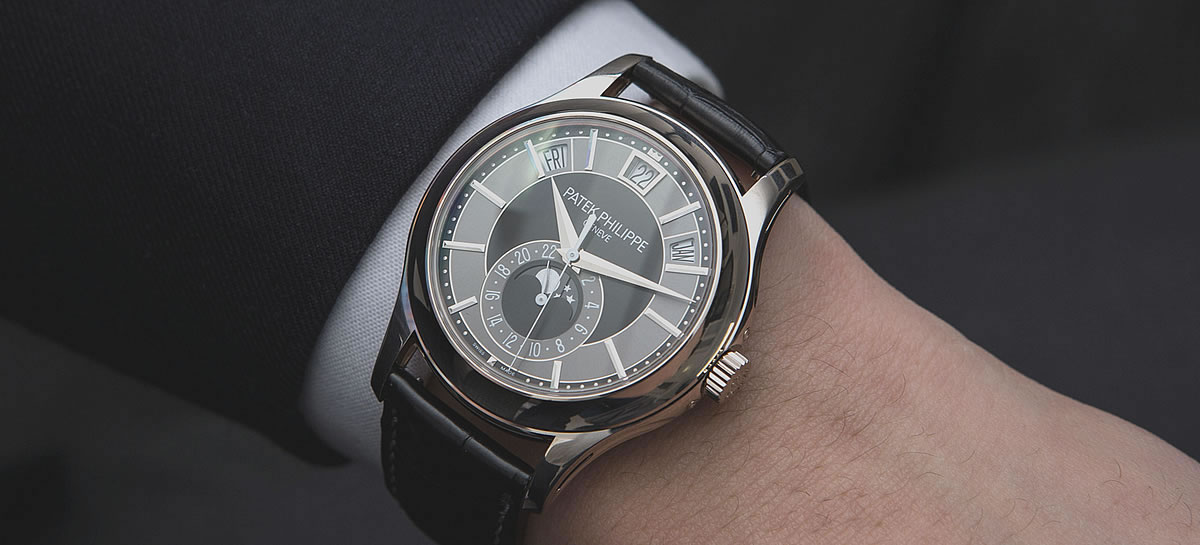
Chronograph watches with a split seconds feature have a pair of seconds hands at the center of the dial and they measure elapsed seconds. The extra seconds hand enables the timing of intermediate time intervals – for example, the laps of a car when it drives around a racetrack – within a lengthier time period. When you switch on the chrono, the two hands will start to move together and they would appear like it’s just one hand instead of two. When the first interval ends, you can stop the split seconds hand, take note of the elapsed time and then restart it, which results in it jumping forward to keep up with the principal hand.
Such action necessitates a fixed but flexible connection between both hands but it should not sap a large amount of energy from the mainspring, so it’s very delicate. The complications start with drilling the long drill hole through the centerwheel of the chronograph’s staff. It needs to be very long because it extends all throughout the whole movement. In addition, the hole should be very precise so that the thin, long and straight staff of the split seconds wheel will only cause minimal friction when it turns in the opening. If it bends, it can affect the functioning of the hand.
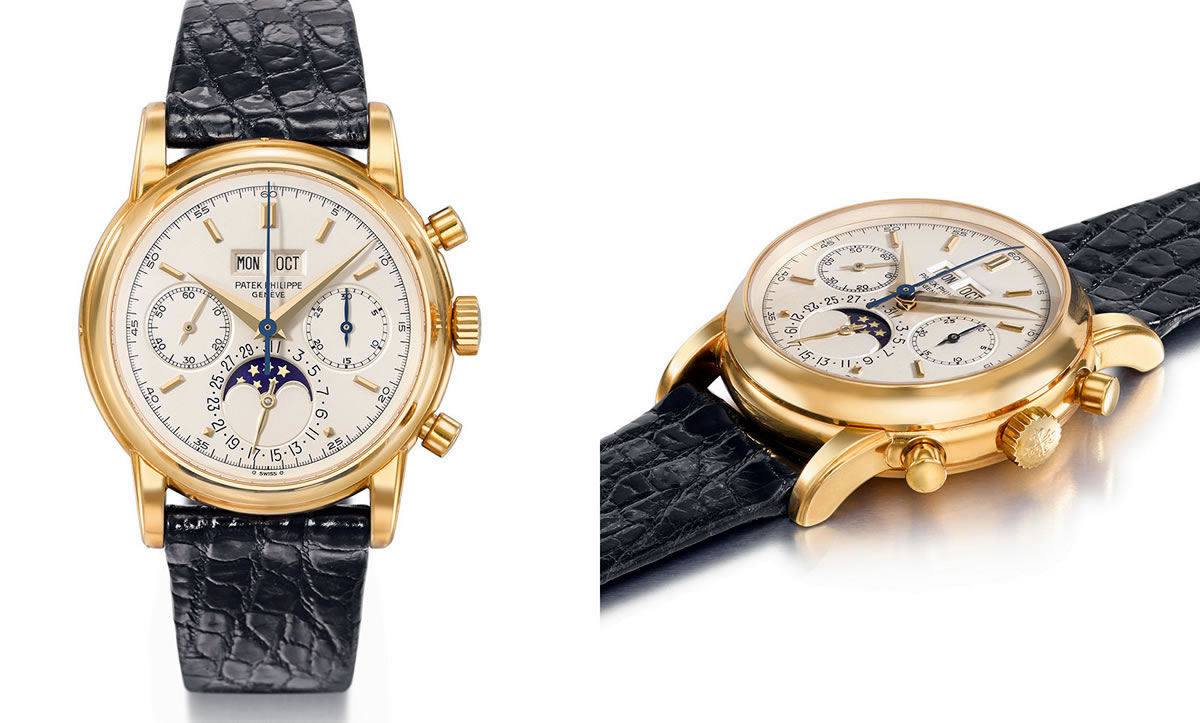
The replica Patek Philippe Complications split seconds heart needs to be screwed to the back of the center wheel. The wheel cooperates with the split seconds wheel which is secured to the split seconds staff. The wheel carries the split seconds lever which comes with a tiny ruby roller on its free end. The split seconds lever is pressed by a thin steel spring firmly against the heart of the double-hand where the ruby roller rests in the little notch. Such contact is enough to cause the hand of the split seconds to rotate along the elapsed seconds hand of the chrono. The X-shaped pincers which are controlled by a column wheel is tasked to stop the split seconds hand. Their ends function like a shoe brake and it is released if one side of the pincer rests atop the pillars of the column wheel for split seconds.
When you press the button for the rattrapante, the Patek Philippe Complications replicas column wheel will advance one position. The pincers are then closed as a result of the descent of the thickened parts between the columns. Two arms push against the split seconds wheel which in turn stops the hand. When this happens the ruby roller runs along the split seconds hand circumference. Upon the reopening of the pincers, the rollers are guided by the spring’s pressure into the heart’s notch and the hand for split seconds catches up with the elapsed seconds hand of the chronograph.
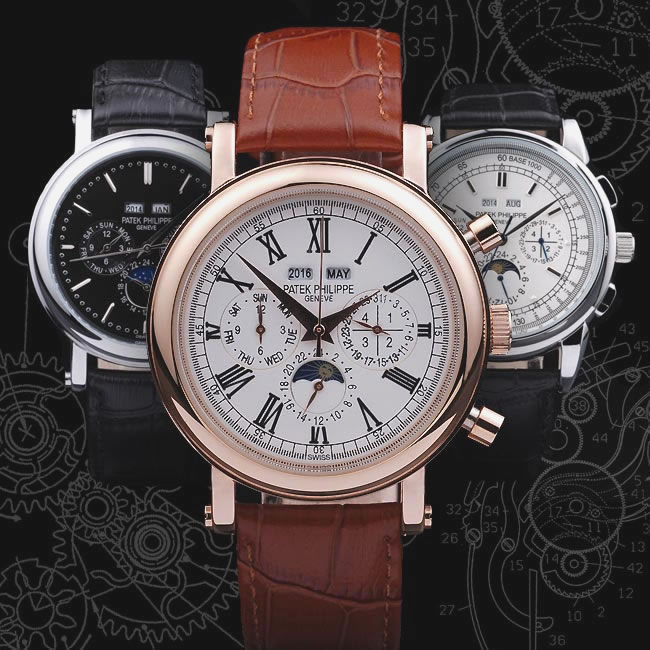
White gold or rose gold case with a natural leather strap and black or white dial with roman numerals.
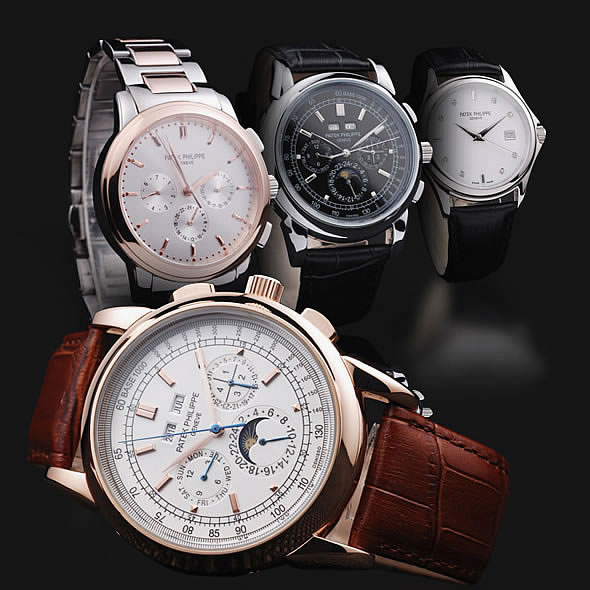
New manually wound Grand Complications for Men and ultra-thin self-winding Calatrava Ladies watches.
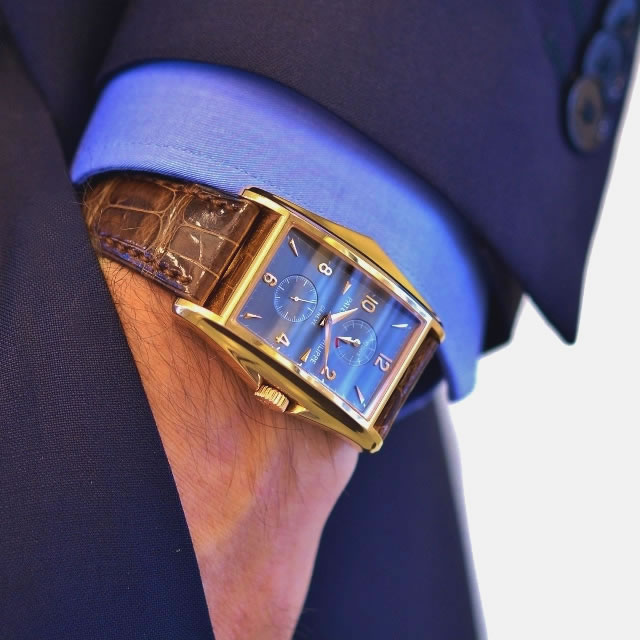
Day-Date indicator and 8 day power reserve from a manually wound movement in Art Deco style inspired case.